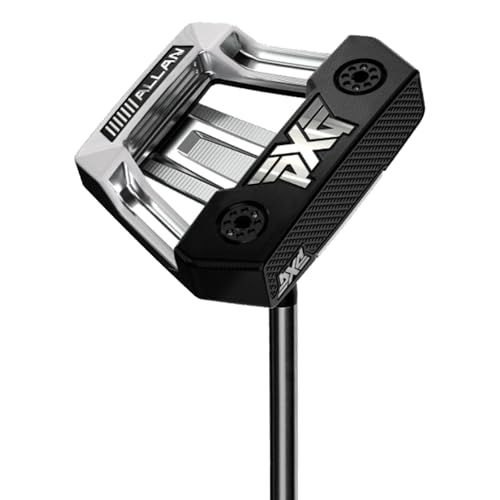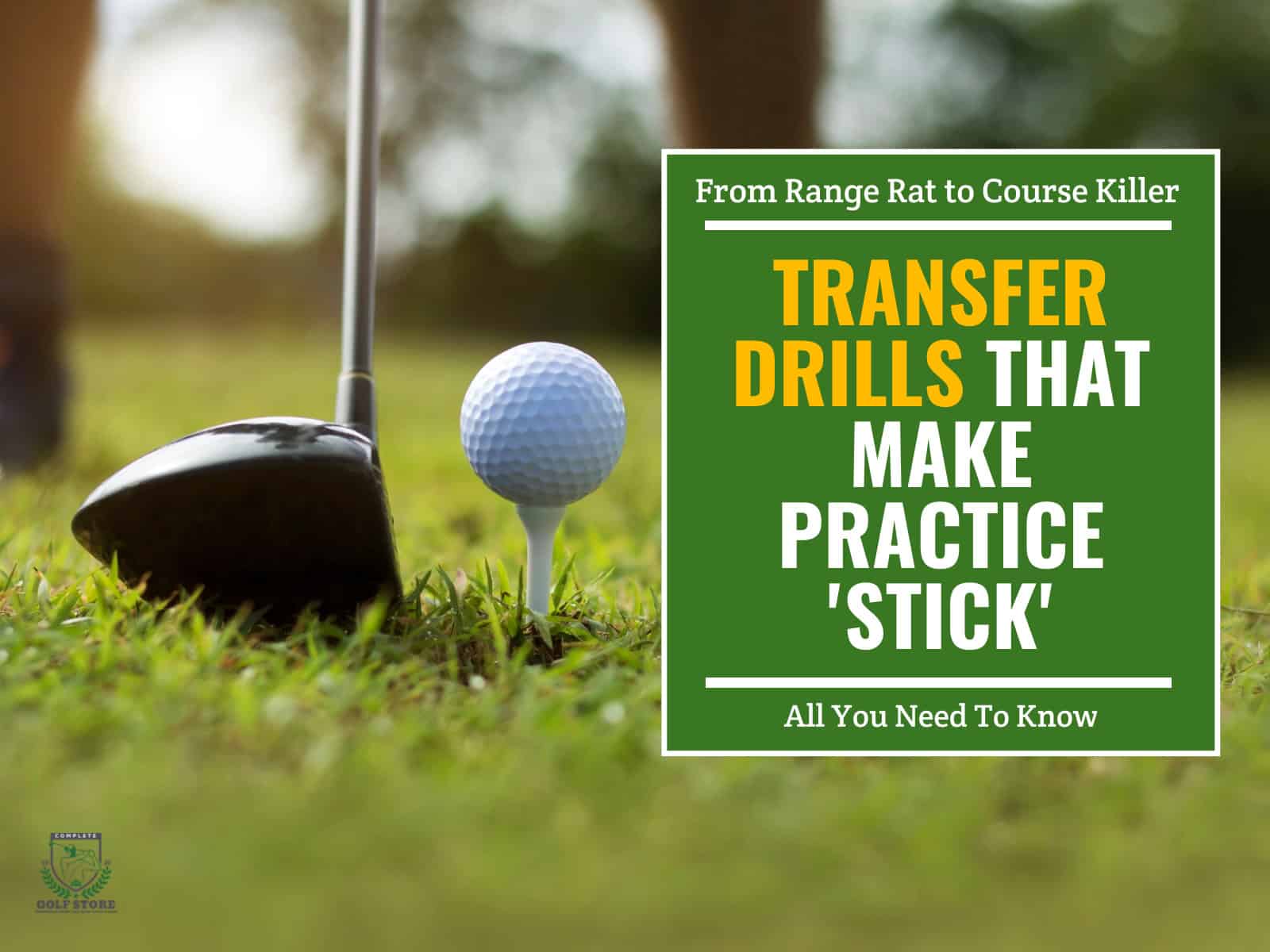Putting is where rounds are made or broken. And yet, it’s also where most golfers struggle to stay consistent, especially under pressure. That’s where zero torque putters come in.
By eliminating the twisting forces that plague traditional putters, these futuristic flatsticks aim to keep the face square from start to finish. The result? Fewer mishits, tighter dispersion and a boost in confidence from short range.
In this guide, you’ll get a breakdown of what makes a zero torque putter different, how it works and whether it’s the fix your short game’s been begging for.
- 1) What Is a Zero Torque Putter?
- 2) Mechanics Behind Zero Torque Putters
- 3) Advantages of Zero Torque Putters
- 4) Are Zero Torque Putters Good for Everyone?
- 5) Leading Brands and Popular Models
- 6) Performance Comparison: Zero Torque vs Traditional Putters
- 7) Custom Fitting and Setup for Zero Torque Putters
- 8) Tour Use and Adoption Trends
-
9)
Frequently Asked Questions
- 9.1) Why do some golfers still prefer traditional putters?
- 9.2) Are zero torque putters legal in all tournaments?
- 9.3) Do zero torque putters work with armlock or broomstick techniques?
- 9.4) Is there a zero torque option for left-handed players?
- 9.5) How can I tell if a putter is truly torque-free?
- 9.6) Do I need to change my putting stroke for a zero torque putter?
- 9.7) Can a zero torque putter improve my putting yips?
- 10) Final Thoughts
What Is a Zero Torque Putter?
Torque. It’s the silent killer in your putting stroke. Every time you miss left or right and swear you didn’t push it, there’s a good chance torque played a role.
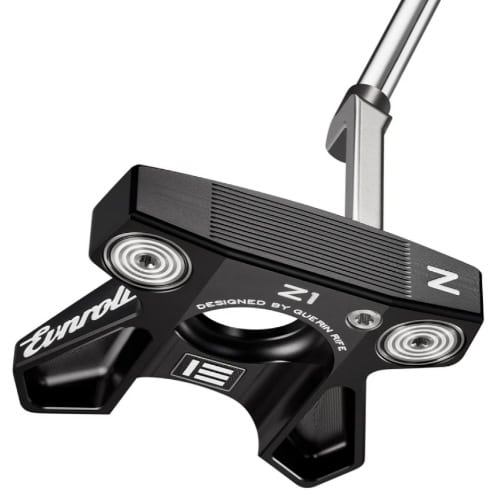
A zero torque putter fixes that. It’s engineered so the shaft runs directly through the putter head’s center of gravity (CG). That alignment removes twisting during the stroke. Instead of fighting the clubhead, you’re guiding it, like steering a car on a straight road instead of correcting a fishtail.
Here’s where it gets interesting. Traditional putters fall into two camps: toe-hang and face-balanced. Toe-hang putters let the toe fall down when balanced, encouraging rotation. Face-balanced putters aim to reduce it, but don’t kill it completely. Zero torque putters shut the door, with the face staying square throughout the stroke.
Why Torque-Free Matters
Golf isn’t about perfect swings. It’s about repeatable outcomes. And when the putter face twists—even by a degree—it’s game over. Studies show over 80% of a putt’s direction comes from face angle at impact.
That means the tiniest misalignment sends your ball wide. Zero torque putters eliminate that variable. No compensating, no overcorrection. Just straight, stable strokes.
Mechanics Behind Zero Torque Putters
To understand why zero torque putters perform differently, you’ve got to look under the hood—literally.

Engineering the Balance Point
Most golfers fight their putter without knowing it. That subtle pull left or push right is often caused by torque, not technique. Zero torque putters attack that problem at the root.
By aligning the shaft with the center of gravity (CG), these putters kill unwanted rotation. The shaft runs directly through the balance point of the head. That’s what keeps the face from twisting. It’s not magic, just physics.
Traditional putters hang the CG behind the shaft, which builds torque into the stroke. Zero torque designs eliminate that by making the CG and shaft axis one and the same. You no longer have to “fix” the stroke mid-motion.
Lie Angle Balance, or LAB, is the principle Golf uses to ensure that even with different head shapes or hosels, the club still returns square without any manipulation.
Materials and Design Innovations
Manufacturers use multi-material construction, tungsten for weighting, aluminum for lightness and stainless steel for structure. The combo lets engineers distribute weight exactly where it matters.
Look closely and you’ll see deep face milling or pyramid textures. These are built to control roll and speed. Some models add adjustable weights so you can tweak swing weight on the fly.
The shapes range from compact blades to full-on spaceships, and that’s intentional. Each design moves mass toward the perimeter, boosting forgiveness while preserving that torque-free feel.
All that tech comes together for one job: keep the face square, no matter what you throw at it.
Advantages of Zero Torque Putters
Golf rewards control and punishes inconsistency. Here’s how zero torque putters help tilt the odds in your favor.
Better Face Control Through Impact
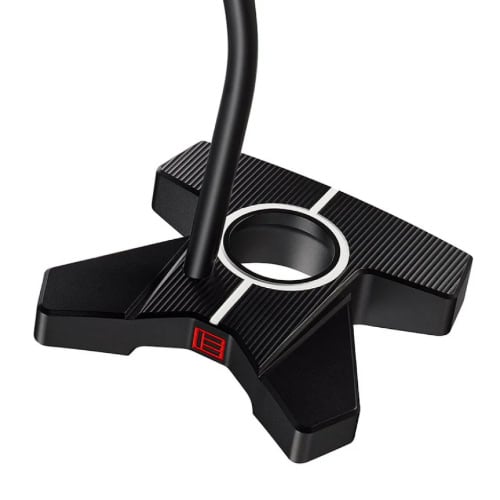
The design of Zero Torque naturally keeps the face square. No compensation or last-second hand action. You get what you aim for.
This control matters most on pressure putts. With torque-free stability, you can swing with confidence, not caution, even with pressure putts.
Greater Forgiveness on Off-Center Hits
Miss the sweet spot on a traditional putter, and you’ll know it. The head twists, speed drops and the ball flutters offline.
Zero torque putters handle those mishits better. Thanks to high MOI designs and balanced weighting, the face stays stable, even when your contact isn’t.
As a result, more putts that stay online, even when you’re not perfect.
Universally Compatible Stroke Support
Because they remove face rotation from the equation, Zero Torque putters support any stroke type without needing special timing or manipulation.
They also suit various grips—claw, left-hand-low, traditional, etc. The putter doesn’t care how you hold it. It just stays square.
Are Zero Torque Putters Good for Everyone?
If you’re the kind of golfer who struggles with consistency inside ten feet, this tech was made for you. Players who battle with keeping the face square, especially under pressure, see the biggest gains.
Beginners love it because it simplifies the stroke. Less face rotation means fewer moving parts to manage. That builds confidence fast.
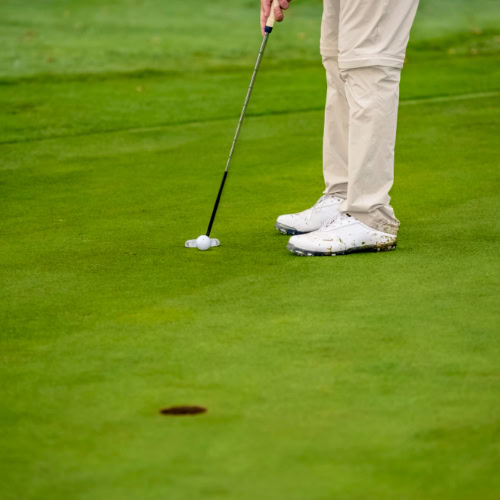
Even experienced golfers gain an edge. Those who’ve always fought face twist or compensate with hand action can finally let go. The putter stays online. Your focus shifts to reading greens and rolling true.
It’s also excellent for players with non-traditional strokes. Whether you’re rocking a claw grip, left-hand-low or something funky that just works for you, zero torque levels the playing field.
What You Might Not Like
Many zero torque designs ditch the classic silhouette. They use center shafts, wider heads and unique alignment aids. They can feel foreign if you’re used to a blade or heel-toe hang.
Feel is another wildcard. Some torque-free models deliver feedback differently. If you rely on “clicky” acoustics or buttery softness, you may need to test a few before finding your groove.
Leading Brands and Popular Models
Some of the best brands in the business have embraced the Zero Torque design, offering a range of options to suit their preferences.
L.A.B. Golf Putters (DF3, Mezz.1 Max, Oz.1i)
L.A.B. Golf is arguably the trailblazer in the zero torque game. Their putters are built around their patented Lie Angle Balance (LAB) technology, which aims to eliminate face twist, no matter the golfer’s stroke. The DF3, Mezz.1 Max and Oz.1i models offer a choice of design, each with a unique aesthetic and feel.
- Lie Angle Balance Technology: The key feature across all L.A.B. putters, this ensures that the putter face stays square throughout the stroke, regardless of how you hold the putter.
- Pro-Approved: Pros like Lucas Glover and Adam Scott have used L.A.B. putters, a testament to their performance on the tour level.
- Custom Fit: L.A.B. also offers a custom fitting process, ensuring that you get the right lie angle for your stroke.
PXG Zero Torque Balance (Allan ZT, Bat Attack ZT)
PXG is no stranger to innovation, and their zero torque putters are no exception. The Allan ZT and Bat Attack ZT putters have gained popularity for their mix of performance and adjustability.
This is achieved by the adoption of adjustable weights, a unique pyramid face pattern and high-MOI design.
Evnroll Z Series and Bettinardi Antidote Putters
Evnroll and Bettinardi bring their own take on zero torque design. The Z Series by Evnroll and the Antidote putters by Bettinardi are all about precision and performance.
- Evnroll Z Series: Known for their patented groove technology, the Z Series putters provide a more consistent roll, regardless of where you strike the ball on the face.
- Bettinardi Antidote: Featuring a sleek mallet design, Bettinardi’s Antidote putters are engineered to minimize torque through their strategic weight placement.
Odyssey AI One Square 2 Square Series
Odyssey’s AI One Square 2 Square series is all about precision and alignment. Known for their innovative inserts and alignment aids, these putters help you lock in on your target.
- Jailbird, Double Wide and #7 Fang Designs: Each putter in the series features Odyssey’s Square 2 Square technology, which ensures the face remains square throughout the stroke.
- AI Inserts: The integration of artificial intelligence in the insert design ensures consistent ball speed and roll, maximizing distance control and accuracy.
Performance Comparison: Zero Torque vs Traditional Putters
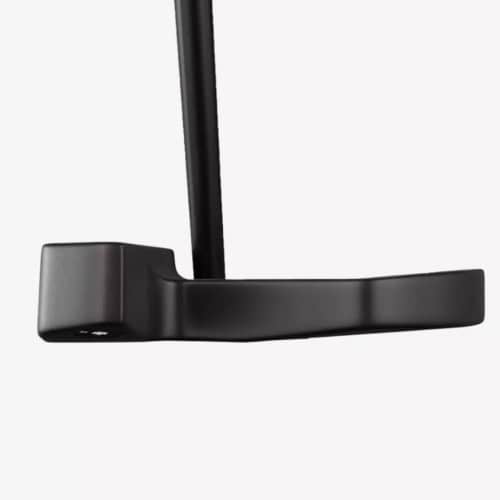
Zero torque putters are shaking up the putting game, but how do they really perform against traditional designs?
Stability and Control Differences
One of the biggest advantages of zero torque putters is stability. Traditional putters, especially those with face-balanced or toe-hang designs, allow the putter face to rotate during the stroke. This requires the player to exert additional effort to control face angle.
Zero torque putters eliminate that issue by aligning the shaft directly through the putter’s center of gravity (CG). This significantly reduces face rotation, making it easier to keep the face square throughout the stroke.
Stroke Repeatability Under Real Conditions
Zero torque putters deliver a high level of consistency because they reduce face twist, even under pressure. Be it a clutch putt to save par or a routine tap-in, the stability of these putters helps you execute with confidence.
Traditional putters often require more focus on technique to avoid unwanted twisting. This can lead to minor errors, especially when you’re nervous or rushed.
Speed and Direction Consistency
The reduction in face rotation means that the putter produces a more uniform roll, helping you control both speed and accuracy more easily. Uphill, downhill or through a break, you’ll see more reliable results with less effort.
Traditional putters are more prone to inconsistency in terms of speed and direction, especially on off-center hits. Even a slight twist of the face can alter the ball’s roll, resulting in poor distance control or missed lines.
How Torque Affects Alignment Over Multiple Putts
Zero torque putters excel at maintaining consistent alignment by keeping the face square through every stroke. This design makes it easier to aim correctly and stay aligned throughout your round, translating into fewer misaligned putts and more precise ball striking.
Traditional putters require active face management to stay square, leading to inconsistencies over time. Zero torque putters make alignment feel natural and repeatable, improving performance across multiple putts.
Custom Fitting and Setup for Zero Torque Putters
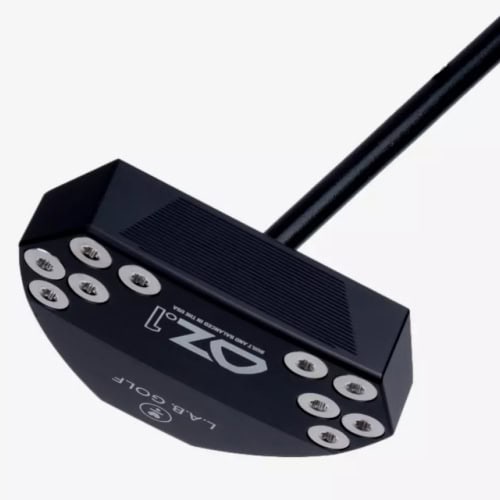
Zero torque putters demand precise shaft alignment with the center of gravity. Custom fitting ensures perfect matching to your stroke mechanics through correct lie angle, loft, grip type, and length. Even small misadjustments can disrupt consistency.
- Lie Angle: Wrong angles cause face opening/closing during the stroke, disrupting aim. Proper lie angle keeps the face square through impact.
- Loft: Essential for consistent roll. Even with minimized face twisting, incorrect loft affects smooth ball roll.
- Grip Type and Length: A comfortable grip improves control; proper length affects stance and stroke balance for maintaining alignment.
Fitting Guidelines by Brand
Each brand offers unique fitting approaches to achieve the perfect setup.
- L.A.B. Golf’s Remote Fitting Process uses measurements and video feedback to determine optimal lie angle and setup, ensuring precise calibration from a distance.
- PXG’s Customization Flow is an in-person fitting with expert stroke analysis, adjusting lie angle, loft and weighting. Models like Allan ZT and Bat Attack ZT offer adjustable weights for further customization.
These processes maximize stability, face control and forgiveness. Proper fitting makes the putter feel like an extension of your body—get it right, and your putting improvement could be dramatic.
Tour Use and Adoption Trends
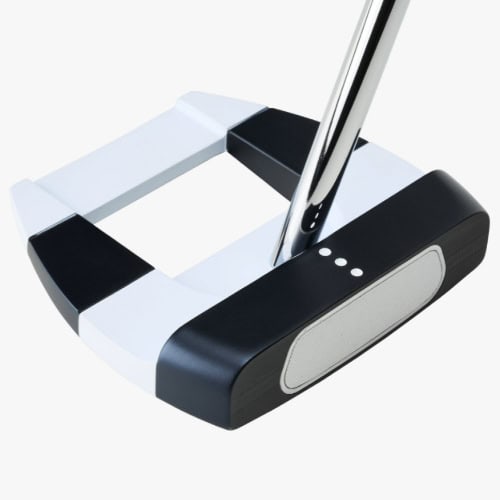
Zero torque putters are gaining traction on professional tours, though adoption remains selective as players balance innovation with tradition.
Which Pros Use Zero Torque Putters
Several successful tour players have embraced zero torque technology with notable results:
- Adam Scott: Switched to the L.A.B. Golf DF3, regaining confidence in his short game and demonstrating enhanced performance under pressure.
- Lucas Glover: Credits zero torque stability for his improved putting consistency, particularly the technology’s ability to keep the face square during challenging putts.
- Brian Harman: His 2025 Valero Texas Open success with the TaylorMade Spider 5K-ZT prototype showcases how the technology improves consistency and confidence in competition.
Reasons for Limited Tour Adoption
While 12% of DP World Tour players use zero torque putters, PGA Tour adoption remains lower, with exceptions like Viktor Hovland. Potential causes include:
- Visual Resistance: The unconventional appearance conflicts with traditional putter aesthetics that many players prefer.
- Brand Loyalty and Feel Preference: Pros often stick with familiar brands and weight distributions, making the switch to groundbreaking technology a significant leap.
Despite these barriers, performance numbers suggest wider acceptance may follow as benefits become undeniable. The question remains: will more pros adopt zero torque technology as performance advantages grow harder to ignore?
Frequently Asked Questions
If you’re considering switching to a zero torque putter, you’ve probably got questions. Let’s tackle some of the most common ones to help you make the right decision.
Why do some golfers still prefer traditional putters?
For some golfers, the familiar feel and appearance of a blade or toe-hang putter make them feel more in control. Traditional putters also tend to offer more feedback on missed hits, which some players prefer for learning and adjusting their strokes.
Are zero torque putters legal in all tournaments?
Yes, zero torque putters are legal in all major tournaments, including PGA Tour events, provided they conform to the equipment rules set by the governing bodies, such as the USGA and R&A.
Do zero torque putters work with armlock or broomstick techniques?
Yes, zero torque putters can work well with both armlock and broomstick putting styles. These putters are designed to keep the face square, which benefits any stroke, be it a traditional, armlock or broomstick method.
Is there a zero torque option for left-handed players?
Absolutely. Many of the leading brands offer left-handed versions of their zero torque putters, including L.A.B. Golf’s DF3, PXG’s Allan ZT and or Odyssey’s AI One Square 2 Square.
How can I tell if a putter is truly torque-free?
To determine if a putter is truly torque-free, you’ll want to look at its design features. A zero torque putter should have a shaft alignment directly through the center of gravity of the clubhead, which helps minimize face twisting.
Do I need to change my putting stroke for a zero torque putter?
Not necessarily. One of the major advantages of a zero torque putter is that it works with a variety of putting strokes. That said, you might experience some adjustment as you adapt to the new feel, but the transition should be smooth.
Can a zero torque putter improve my putting yips?
Zero torque putters can be a helpful tool in overcoming the putting yips. Since the design minimizes face rotation and maintains a square face throughout the stroke, it can help reduce the anxiety that often triggers the yips. The stability of the putter allows for smoother, more consistent strokes, potentially reducing the fear of mishits and improving overall confidence on the greens.
Final Thoughts
The Zero Torque technology, designed to keep the putter face square throughout the stroke, offers real, measurable improvements for golfers at all skill levels. Whether you’re struggling with consistency, dealing with the yips or just looking to improve your putting game, these putters are worth a serious look.
With precision engineering behind the shaft alignment and a variety of models available, zero torque putters deliver improved stability, control and forgiveness. The results speak for themselves: more accurate putts, fewer face rotations and more confidence on the green.
While aesthetics may take some getting used to, the trade-off in performance could be more than worth it. With the right fit, the right model and the right mindset, zero torque putters can make your short game more consistent and your putting stroke more reliable than ever. The only thing left to ask is: are you ready to make the switch?



